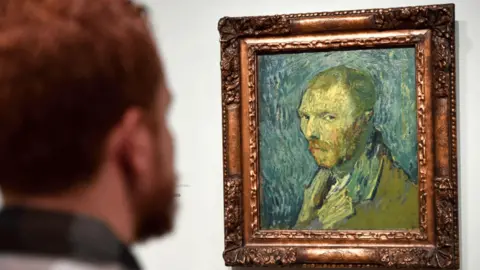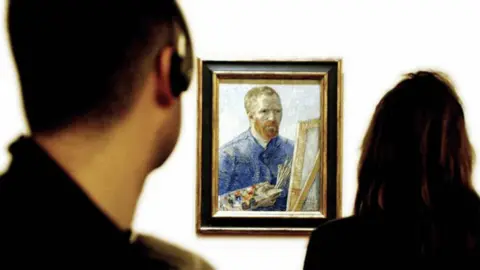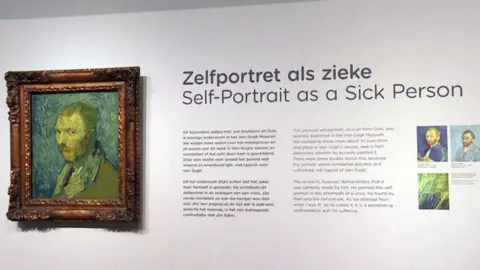Van Gogh self-portrait is genuine, experts decide
 Reuters
ReutersA brooding self-portrait by Vincent van Gogh has finally been declared genuine after years of uncertainty.
Art experts have identified Self Portrait (1889) as the only work painted by the Dutch master while he was suffering from psychosis.
It was confirmed as authentic by the Van Gogh Museum in Amsterdam.
Experts established that it was painted while Van Gogh was in an asylum in Saint-Remy in France in the late summer of 1889.
Doubts about the authenticity of the painting had been around since 1970.
The National Gallery in Oslo, Norway, which owns the work, sent it to Dutch experts, who used X-ray analysis of the canvas, studies of the brushwork and references in letters to Van Gogh's brother Theo.
 AFP
AFPVan Gogh described the painting in a letter to his brother in September 1889 as "an attempt from when I was ill".
The artist wrote that he was hit by a "severe psychotic episode" lasting six weeks from that July, and although he felt able to paint again by the end, he said he was still "disturbed".
The Oslo museum bought the painting in 1910 from a collector in Paris, making it the first Van Gogh self-portrait to enter a public collection.
"The self-portrait that is behind me has been doubted for a very long time," Louis van Tilborgh, senior researcher at the Van Gogh Museum, told the AFP news agency.
"It's a work of art that for all kinds of reasons was by him but nevertheless also had certain aspects that were different from other pictures.
"So we had to find an explanation for that and that was difficult, but I think we've solved that." He added that the painting "firmly depicts someone who is mentally ill".
 AFP
AFPTo the untrained eye, it looks like a Van Gogh at first glance. But the doubts arose because of the use of less vibrant colours than his other works from the same period, including muted blues and yellows, along with the fact that some of the paintwork looks less finished.
Mai Britt Guleng, curator of old masters and modern art at the Oslo museum, said they had been "open to all possibilities" but "of course we are very happy" that the painting is genuine.
A year before painting the self-portrait, Van Gogh had cut off his own ear after a row with his friend and fellow artist Paul Gauguin, beginning a long spell in and out of hospitals and asylums.
"Although Van Gogh was frightened to admit at that point that he was in a similar state to his fellow residents at the asylum, he probably painted this portrait to reconcile himself with what he saw in the mirror: a person he did not wish to be, yet was," said Van Tilborgh, who is also professor of art history at the University of Amsterdam.
"This is part of what makes the painting so remarkable and even therapeutic. It is the only work that Van Gogh is known for certain to have created while suffering from psychosis."
The painting is currently on display at the Van Gogh Museum in Amsterdam and will return to Oslo when its new national museum opens in 2021.

Follow us on Facebook, or on Twitter @BBCNewsEnts. If you have a story suggestion email [email protected].
